Tuk Tuk Tours
Explore Bangkok by the iconic tuk tuk
About Planning a Visit to Lampang in Northern Thailand
Laid-back Lampang may not be on the radar of most overseas tourists, but those that do travel here find a charming riverside city and an area rich in history. There are plenty of things to do in Lampang and a visit here makes for an excellent day trip from either Chiang Mai or Chiang Rai.
It this article we share all you need to know about Lampang.
In the late 1800s, Lampang was a major transport and trading hub for the lucrative teak trade. The city attracted Siamese and foreign merchants and their legacy lives on today. Walking around Lampang you can still see the teak mansions and Burmese-style temples from that era.
Lamphang is a great stopover if travelling overland from Bangkok to Chiang Mai. If you have more time on your travels through Northern Thailand, spend at least three days in Lampang to really appreciate its appeal.
Whether you are looking to enjoy nature, culture or history, there are lots of options for things to do in Lampang. For a good overview, head to the helpful Tourist Information Centre. Call in at the office near the clocktower on Thakhrao Road and pick up a handy map of Lampang.
The beautiful teak mansions dotted around Lampang are reminders of the boom years of the logging industry. One of the most famous is the Louis Leonowens House. Louis Leonowens worked in the teak trade in North Thailand (then called Siam) in the late 1800s. He spent time in Bangkok as a child where his mother, Anna Leonowens, taught the children of King Mongkut (Rama IV). Anna’s fictionalised account of her stay in Siam was later used as the inspiration for the musical and movie, ‘The King And I‘.
The Moung Ngwe Zin building is one of Thailand’s best examples of the gingerbread style of architecture. This style found favour with the wealthy homeowners who added ornate fretwork to their teak structures. Constructed by the Burmese teak merchant Moung Ngwe Zin, the building has been renovated and is now home to an art gallery and cafe. Two more delightful buildings worth seeking out are Ban Sao Nak and Ban Pong Nak.
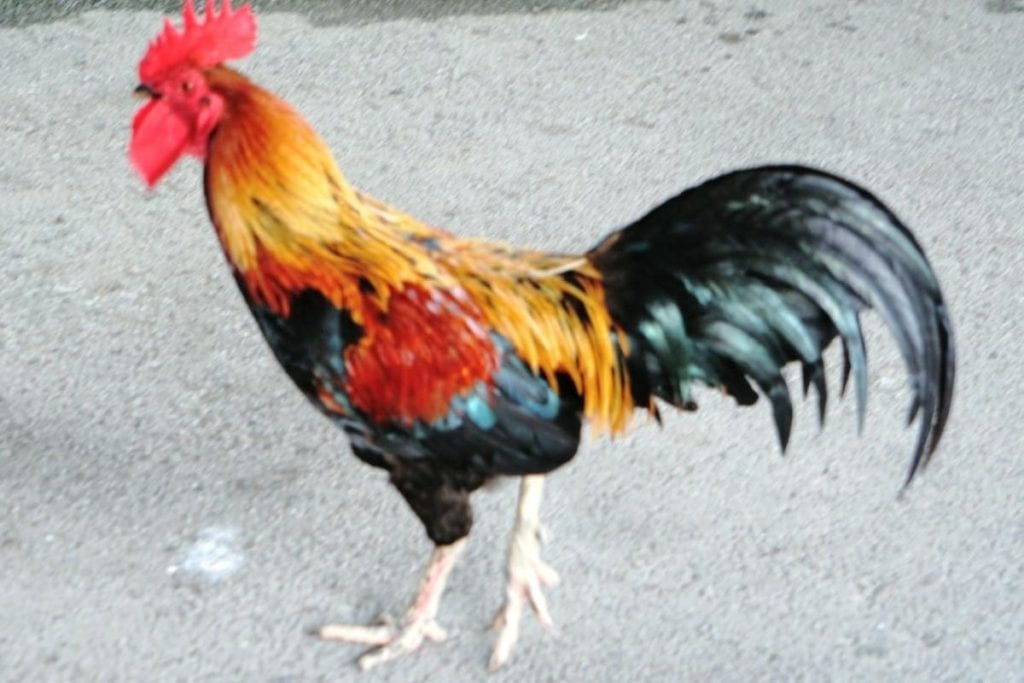
We can’t talk about Lampang without mentioning roosters. Wherever you go in Lampang you won’t have to look very hard to find a rooster. The animal appears on artwork, street signs, bridges, and drain covers. A white rooster even features on Lampang’s provincial seal. The roosters also adorn the famous Lampang ceramics.
Lampang’s rooster association comes from a legend about the Buddha’s visit. According to the story that has been passed down over the centuries, the Hindu God Indra was worried that the easy-going Lampang people wouldn’t wake up early enough to offer alms. So he disguised himself as a rooster and his loud early morning crow woke up the people from their slumber.
A short walk from the Tourist Information Centre, stop by at the informative Bhum Lakon Museum. The museum is the perfect place to learn about the history of Lampang and the role of the teak industry. Displays in Thai and English also shine a light on local culture and insights into life in Lampang.
For a good introduction into Lampang, a visit to Bhum Lakon Museum will probably be enough for most visitors. But Lampang Museum is another informative local museum which may appeal to anybody interested in history and culture. With interactive displays, spending an hour here will set you up for a few days exploring Lampang.
Lampang is famous for its ceramic ware and there is no better place to learn about the production process than Dhanabadee Ceramic Museum. This is also the perfect place to pick up some of those iconic Lampang rooster bowls as souvenirs.
A walk along Lampang’s riverside promenade is a pleasant way to get your bearings as you explore the city. The photogenic Ratchadaphisek Bridge that straddles the Mae Wang River is one of the most distinctive landmarks of Lampang. The suspension bridge further west is another attractive spot on the river. And while you are in the riverside area, look out too for the colourful street art depicting local life and the famous Lampang rooster.
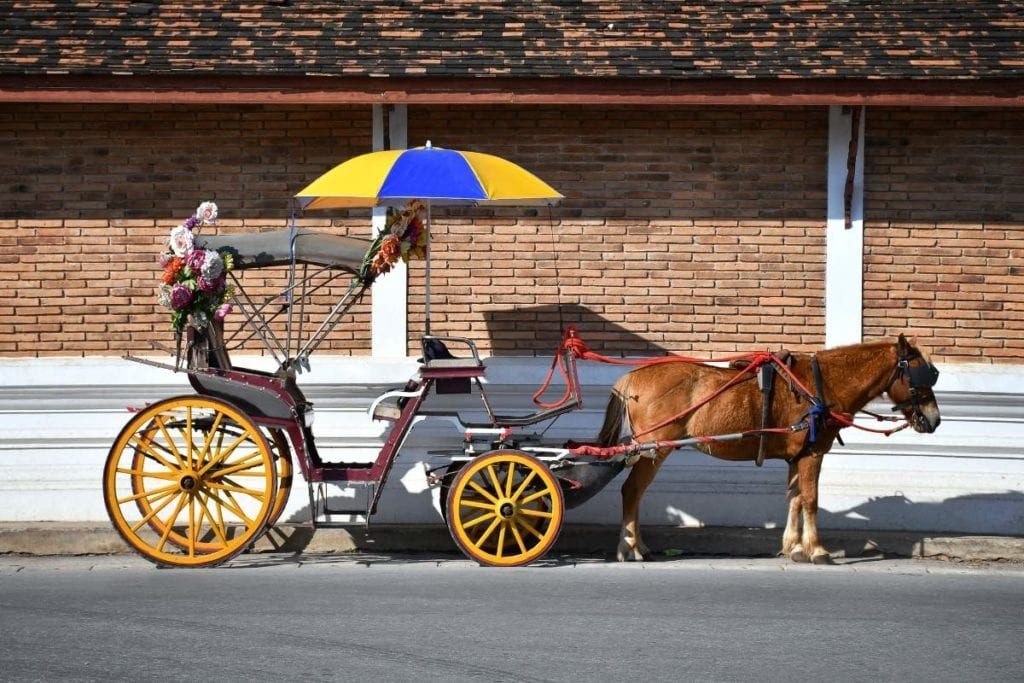
Along with roosters, the other animals most closely associated with Lampang are horses. If you stay in Lampang for any length of time, you’ll notice horses and carts riding along the city streets.
Horse-drawn carriages were first introduced in the 1900s when the northern train route reached Lampang. They were originally used to carry goods from the train station at a time when the city was booming because of the teak trade. After the decline of the teak trade, the local people used the horses and carts as a regular form of transport. It’s only in more recent times that the carriages have carried tourists.
A number of Lampang’s heritage houses, including the Moung Ngwe Zin House, are located in this old market area. Kad Kong Ta is a lovely area to explore on any day of the week. On weekend evenings there is an added bonus because it’s transformed into a Walking Street Market.
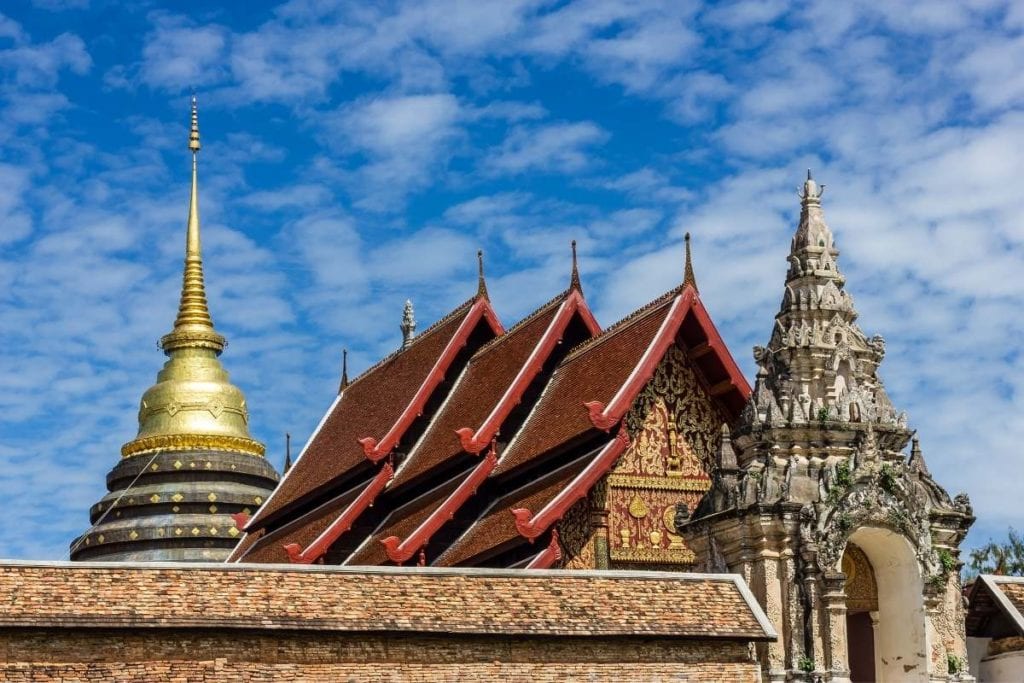
One of the most important and elegant temples in North Thailand, Wat Phra That Lampang Luang is located a short drive away from Lampang city centre. Encircled by walls, the temple complex features a chedi which contains a relic of the Buddha. Wat Phra That Lampang Luang is highly revered by Thai people and the historic wooden structures are a classic example of Lanna-style temple design.
Further out of town still are the ‘floating pagodas’ of Wat Phrabat Pu Phadaeng. Sitting high up on a cliff they take some legwork to reach, but are well worth the effort.
Wat Sri Chum was built by traders during the teak industry heyday and a wonderful example of craftsmanship. Other notable temples to visit in Lampang include Wat Chedi Sao, Wat Si Rong Muang and Wat Phra Kaeo Don Tao.
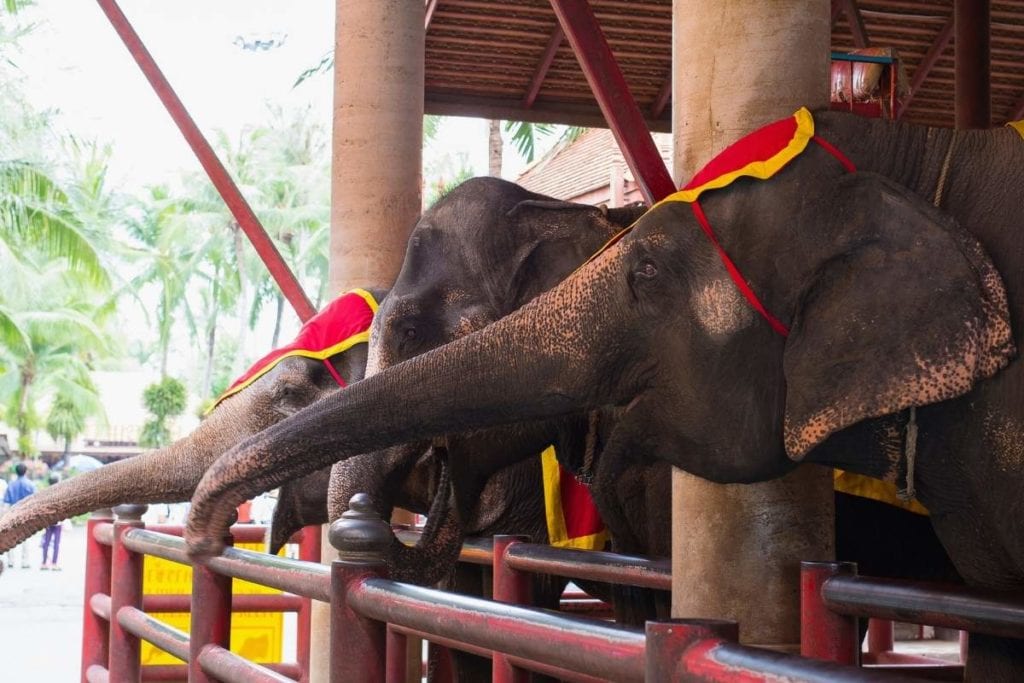
The government-run Thai Elephant Conservation Centre (TECC) is located around 30 km from Lampang city. Adjacent to the TECC is the privately funded Hospital of the Friends of the Asian Elephant Foundation. The hospital is the home of Mosha, an elephant who was fitted with a prosthetic leg after stepping on a landmine in a remote border area. Mosha was the inspiration behind Elephant Parade, a project based in Chiang Mai which raises awareness and revenue to help protect Asian elephants.
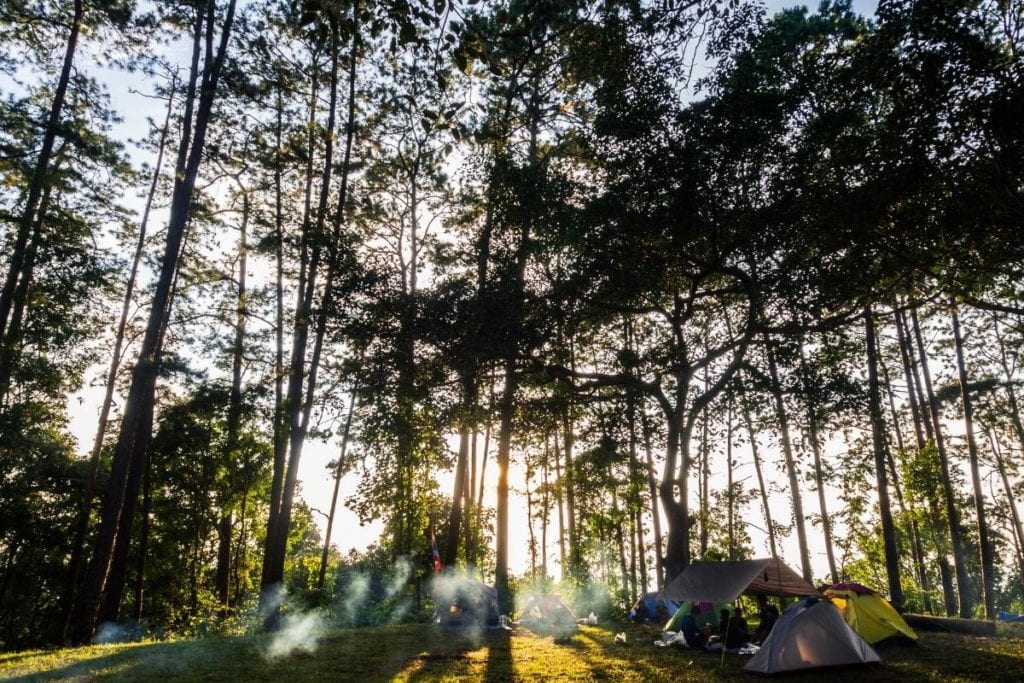
Doi Khun Tan National Park is a pleasant area to explore if you enjoy hiking. The park covers parts of Lampang and Lamphun province. To get the most out of the walking trails, stay at least one night in the National Park bungalows. You can take the train from Lampang to photogenic Doi Khun station from where it’s around a one mile walk to the park. Another option for nature lovers is the scenic Chae Son National Park.
You’ll find all the usual Northern Thai classics in Lampang including khao soi and kanom jeen nam ngiaw. One local speciality that you will also see around town are rice cakes known as ‘khao taen’. These tasty treats are made from sticky rice and watermelon juice.
If you stay in Lampang on the weekends, don’t miss the atmospheric Walking Street Markets for shopping, music and local food. On Friday evenings, the market sets up at Wang Nua (also known as Cultural Street). On Saturdays and Sundays the market moves to Kad Kong Ta.
Two other markets are open each day and if you are foodies, worth spending some time at. The Kao Chao morning market can be found next to the railway station and the Talad Kao (Old Market) is near Kad Tong Ka and the riverside area.
If you’re travelling from Bangkok to Lampang, there is a small airport just outside of town. For a more scenic journey, take the train from either Bangkok or Chiang Mai to Lampang. On arrival, have your camera ready to take snaps of the historic Nakhon Lampang train station.
Travelling by road, Lampang is a two hour drive from Chiang Mai. The reliable Green Bus company operates routes across North Thailand that connect Lampang with Chiang Mai and Chiang Rai.
At Expique our mission is to help people discover the real Bangkok (and beyond) and the local cultures. Our current focus is to provide the best content available to plan a trip and discover Thailand.
Prior to COVID-19 our focus was on offering a range of experiences in Bangkok including our award winning Bangkok Night Lights Tuk Tuk Tour.
For now however, our focus is on creating amazing content instead.
Subscribe to our newsletter to receive monthly news and tips about exploring Bangkok.